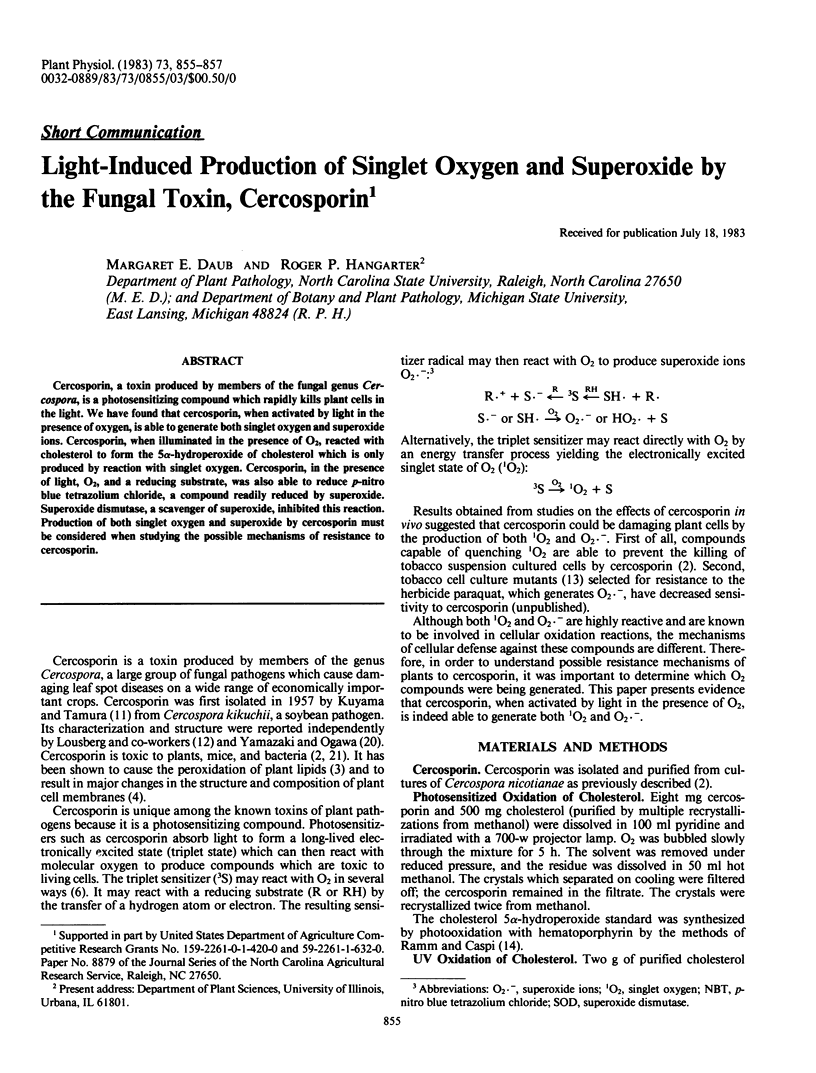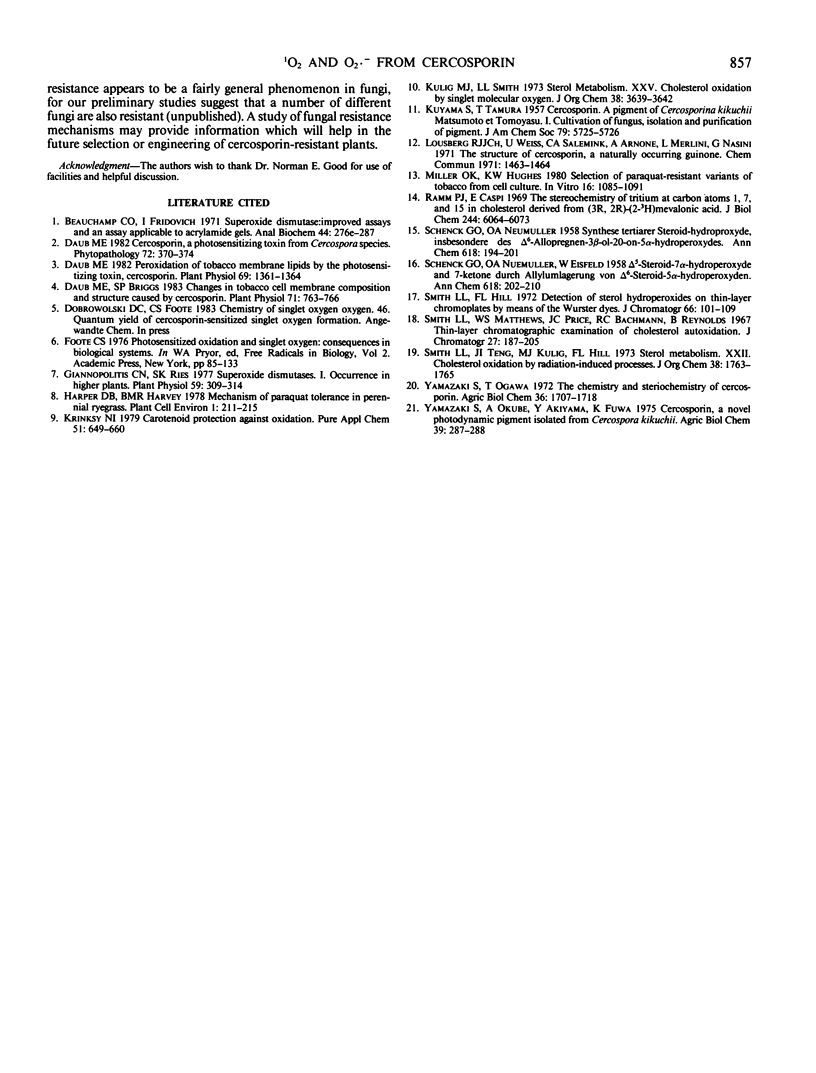Abstract
Cercosporin, a toxin produced by members of the fungal genus Cercospora, is a photosensitizing compound which rapidly kills plant cells in the light. We have found that cercosporin, when activated by light in the presence of oxygen, is able to generate both singlet oxygen and superoxide ions. Cercosporin, when illuminated in the presence of O2, reacted with cholesterol to form the 5α-hydroperoxide of cholesterol which is only produced by reaction with singlet oxygen. Cercosporin, in the presence of light, O2, and a reducing substrate, was also able to reduce p-nitro blue tetrazolium chloride, a compound readily reduced by superoxide. Superoxide dismutase, a scavenger of superoxide, inhibited this reaction. Production of both singlet oxygen and superoxide by cercosporin must be considered when studying the possible mechanisms of resistance to cercosporin.
Full text
PDF


Selected References
These references are in PubMed. This may not be the complete list of references from this article.
- Beauchamp C., Fridovich I. Superoxide dismutase: improved assays and an assay applicable to acrylamide gels. Anal Biochem. 1971 Nov;44(1):276–287. doi: 10.1016/0003-2697(71)90370-8. [DOI] [PubMed] [Google Scholar]
- Daub M. E., Briggs S. P. Changes in tobacco cell membrane composition and structure caused by cercosporin. Plant Physiol. 1983 Apr;71(4):763–766. doi: 10.1104/pp.71.4.763. [DOI] [PMC free article] [PubMed] [Google Scholar]
- Daub M. E. Peroxidation of tobacco membrane lipids by the photosensitizing toxin, cercosporin. Plant Physiol. 1982 Jun;69(6):1361–1364. doi: 10.1104/pp.69.6.1361. [DOI] [PMC free article] [PubMed] [Google Scholar]
- Giannopolitis C. N., Ries S. K. Superoxide dismutases: I. Occurrence in higher plants. Plant Physiol. 1977 Feb;59(2):309–314. doi: 10.1104/pp.59.2.309. [DOI] [PMC free article] [PubMed] [Google Scholar]
- Kulig M. J., Smith L. L. Sterol metabolism. XXV. Cholesterol oxidation by singlet molecular oxygen. J Org Chem. 1973 Oct 5;38(20):3639–3642. doi: 10.1021/jo00960a050. [DOI] [PubMed] [Google Scholar]
- Ramm P. J., Caspi E. The stereochemistry of tritium at carbon atoms 1, 7, and 15 in cholesterol derived from (3R,2R)-(2-3H)-mevalonic acid. J Biol Chem. 1969 Nov 25;244(22):6064–6073. [PubMed] [Google Scholar]
- Smith L. L., Hill F. L. Detection of sterol hydroperoxides on thin-layer chromatoplates by means of the Wurster dyes. J Chromatogr. 1972 Mar 22;66(1):101–109. doi: 10.1016/s0021-9673(01)82933-2. [DOI] [PubMed] [Google Scholar]
- Smith L. L., Teng J. I., Kulig M. J., Hill F. L. Sterol metabolism. 23. Cholesterol oxidation by radiation-induced processes. J Org Chem. 1973 May 4;38(9):1763–1765. doi: 10.1021/jo00949a041. [DOI] [PubMed] [Google Scholar]


